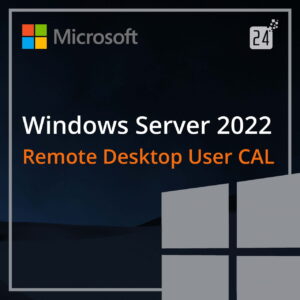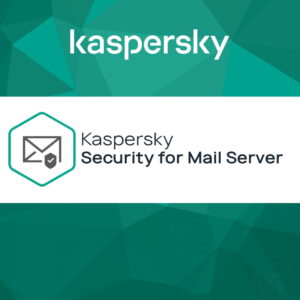In the current digital era, the expansion of web traffic has soared to unparalleled heights, primarily driven by the widespread availability of online content and the growing dependence on digital communication. By the year 2023, the global internet user community had exceeded 5.18 billion, with data usage hitting an astonishing 150.7 exabytes each month, predominantly fueled by the upsurge in video content. This immense data volume necessitates highly effective and dependable connectivity solutions to ensure the smooth operation of the internet.
At the heart of this connectivity lies the notion of peering—where networks swap internet traffic at specified points to uphold the seamless flow of data worldwide. As the digital terrain keeps evolving, traditional peering methods, such as Direct Peering, have become increasingly cumbersome due to the high expenses and intricacies involved. In response, Remote Peering has surfaced as a more adaptable, scalable, and cost-efficient alternative, presenting a contemporary solution to meet the escalating demands of global connectivity.
The Idea of Peering
Peering is the direct interchange of internet traffic between networks at an Internet Exchange Point (IXP). This approach enables Internet Service Providers (ISPs) and other networks to exchange data more efficiently, leading to improved internet performance and decreased dependence on third-party transit providers. By reducing the number of hops data must traverse between networks, peering results in a quicker and more reliable internet experience for end-users.
Conventional Peering Styles
Traditionally, organizations have depended on Direct Peering to link up with IXPs. This method necessitates a physical Point of Presence (PoP) at the exchange point, where the network must set up hardware, manage multiple supplier relationships, and pay additional fees for connections and colocation. While effective, this approach is both expensive and time-consuming, especially as organizations aim to broaden their global presence.
The Shift to Remote Peering
Acknowledging the constraints of Direct Peering, many organizations are now embracing Remote Peering as a more efficient option. Remote Peering empowers businesses to connect to an IXP without the requirement for a physical presence at the exchange point. Instead, they can leverage a service provider’s existing connections to the peering platform, enabling a quicker and more cost-effective setup.
How Remote Peering Operates
Remote Peering streamlines the process of linking up with multiple IXPs. Rather than establishing a separate physical connection at each IXP, businesses can access multiple exchange points through a single interconnection port provided by a Remote Peering provider. This setup only demands one cross-connect to the service port, which can then link up with various IXPs globally.
Key Elements of Remote Peering
- Single Interconnection Port: Remote Peering allows businesses to access multiple IXPs using a single interconnection port, eliminating the need for multiple physical ports and cross-connects.
- No Physical PoP Required: Unlike Direct Peering, Remote Peering does not require a physical presence at the IXP, which significantly reduces the hardware and colocation costs.
- Simplified Vendor Management: By teaming up with a Remote Peering provider, businesses can avoid the intricacies of managing multiple IXP relationships, as the provider typically offers end-to-end service level agreements (SLAs) and a single contract for all peering activities.
Merits of Remote Peering
Extended Global Reach
A notable advantage of Remote Peering is the capability to link up with a broad array of IXPs worldwide through a single service provider. This setup empowers businesses to broaden their reach to hundreds of IP networks globally, ensuring they can efficiently distribute content to a wider audience.
For instance, a large Remote Peering provider might establish connections with over 16 prominent IXPs globally, enabling businesses to peer with major exchange points like AMS-IX, LINX, SGIX, and DE-CIX. This capability not only expands the organization’s global footprint but also grants access to diverse peering communities, including content providers, gaming platforms, and payment processors.
Enhanced Network Performance
Remote Peering facilitates connections with a wider range of networks at different IXPs, leading to improved network performance and reduced latency. By enabling peering at strategic locations, Remote Peering minimizes the distance data packets must travel between networks, resulting in faster data transfer and lower latency. Additionally, it provides network administrators with more control over traffic routing, allowing them to bypass congestion points and intermediary networks.
Financial Savings
One of the most convincing reasons to embrace Remote Peering is the potential for significant cost savings. Direct Peering necessitates substantial investment in physical infrastructure, including hardware, colocation fees, and ongoing maintenance costs. Conversely, Remote Peering diminishes these expenditures by eliminating the need for a physical presence at the IXP and consolidating multiple peering relationships into a single, manageable contract.
Organizations can realize substantial savings by consolidating their Direct Peering connections into a Remote Peering service. For instance, a business that traditionally peered with five IXPs across Europe could curtail its annual costs by 40% by transitioning to a Remote Peering solution that utilizes a single 100G interconnection port.
Operational Ease
Remote Peering also simplifies network operations by lessening the complexity linked with managing multiple peering relationships. Once a network joins an IXP and defines a peering policy, the autonomous systems take charge of the rest. This automation streamlines the process and enables organizations to concentrate on other aspects of their digital strategy.
Moreover, some Remote Peering providers offer advanced Network-as-a-Service (NaaS) platforms that empower businesses to self-provision, scale, and monitor their peering and connectivity services. This level of control and flexibility is particularly valuable in a digital landscape where agility is vital for remaining competitive.
Challenges and Factors to Consider
Though Remote Peering presents numerous benefits, organizations need to meticulously assess their specific needs and challenges before embracing this model.
Concerns About Latency and Performance
Although Remote Peering can decrease latency by enabling connections at strategic locations, the overall performance hinges on the quality and extent of the service provider’s network. Organizations should ensure that their provider boasts a robust and high-performance global network to support their peering requirements.
Security and Compliance
As with any network service, security is a pivotal consideration in Remote Peering. Organizations must evaluate the security measures implemented by their provider, including encryption, access controls, and compliance with industry standards. A robust SLA that assures security and network resiliency is crucial for safeguarding sensitive data and upholding service continuity.
Vendor Lock-In and Flexibility
Depending solely on a single provider for Remote Peering services might lead to vendor lock-in, constraining the organization’s ability to switch providers or modify their peering strategy as required. To mitigate this risk, businesses should seek out providers that offer flexible terms, clear exit strategies, and the ability to easily scale or reconfigure their peering setup.
Conclusion
As the demand for global connectivity continues to surge, Remote Peering emerges as a potent solution for organizations seeking to expand their internet reach without the expenses and complications of traditional peering methods. By offering extended global reach, improved network performance, and noteworthy cost savings, Remote Peering empowers businesses to remain competitive in an increasingly digital world.
Nevertheless, as with any technological solution, it’s imperative to thoroughly assess the potential challenges and opt for a provider that aligns with the organization’s specific needs and objectives. With the right approach, Remote Peering can unlock fresh opportunities for growth and innovation, enabling businesses to deliver exceptional digital experiences to users worldwide.


![[Galaxy Presentation 2024] A Fresh Period of Galaxy Artificial Intelligence Emerges at the Louvre in Paris – Samsung Global News Hub Samsung-Mobile-Galaxy-Unpacked-2024-Sketch_thumb728.jpg](https://dvd.gr/wp-content/uploads/2024/07/Samsung-Mobile-Galaxy-Unpacked-2024-Sketch_thumb728-150x150.jpg)
![[Video] An Individual Intelligent Health Companion — Innovative Approaches To Supervise Wellness – Samsung Global Newsroom Samsung-Mobile-Galaxy-Unpacked-2024-Hands-on-Video-New-Ways-To-Manage-Health_thumb728.jpg](https://dvd.gr/wp-content/uploads/2024/07/Samsung-Mobile-Galaxy-Unpacked-2024-Hands-on-Video-New-Ways-To-Manage-Health_thumb728-150x150.jpg)







